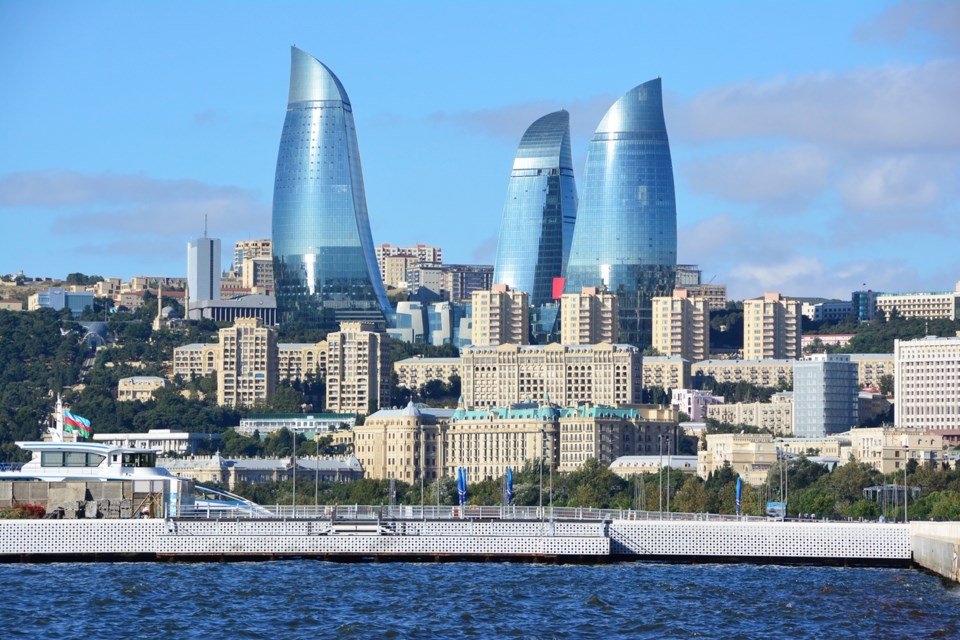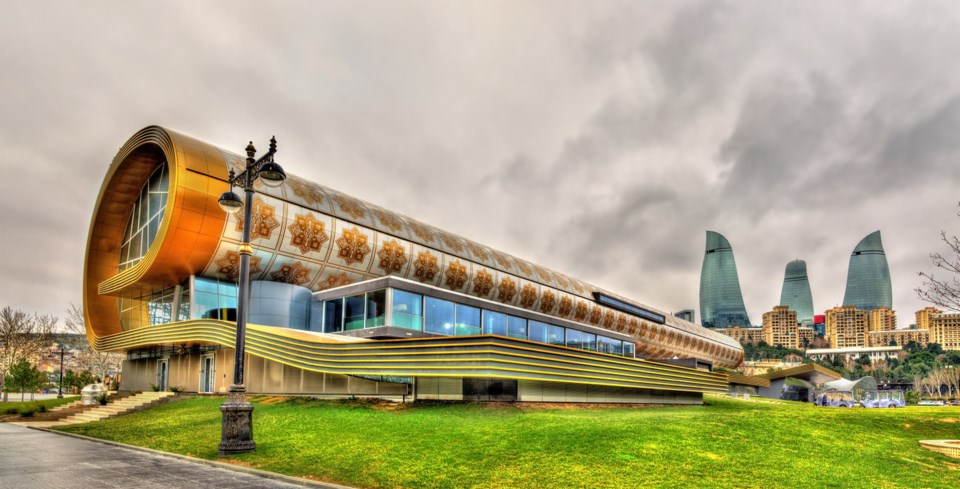The internet has certainly transformed our lives.
I have been very conscious of this the past few days as I was asked to respond to a Vancouver journalist’s question about the impact of the new duplex zoning on land values, while touring the extraordinary, transformative architecture of Baku, Azerbaijan.
I came to this city for three reasons.
As a 10-year-old stamp collector in Toronto, I was fascinated by the stamps of Azerbaijan. The country name seemed so exotic.
Five decades later, at Expo 2010 in Shanghai, I wandered into the Azerbaijani pavilion where I saw futuristic images of Baku. At the time, I could not tell if they were drawings of what was to come or what had been built. I learned these were not drawings — these were photographs of actual buildings constructed with the country’s oil wealth.
Two years later, I saw an illustration of Baku with what looked like three giant slugs superimposed on the city skyline. I had to check Wikipedia to see if this too was the result of someone’s imagination or if these were real buildings. They were real buildings.

Not only are the buildings extraordinary to view in the day time, at night they are lit up with constantly changing colours and images. At times, they appear like giant flames on the horizon.
These buildings, one of which is the same height as Vancouver’s Shangri-La Hotel, seemed so out of context to me, I wondered what the locals thought of them. Were they considered a blight on the landscape? Were they disrespectful to the city’s medieval Islamic history. I discovered that, on the contrary, everyone was proud of the development.
I was told that thousands of years ago, Zoroastrianism, a religion based around worshipping fire, was popular. These towers played homage to this past.
Over the centuries, the city has been constantly transformed from an Islamic, medieval-walled city to a centre of lavish buildings built by wealthy oil barons, followed by an era of dull, Soviet architecture, and today’s extraordinary contemporary designs.
As I wandered around the city, I could not help but compare it with what is happening in Vancouver. In Baku, they have such extraordinary juxtapositions, while in Vancouver, many worry how new duplexes might destroy the character of single-family neighbourhoods.
While I too question whether the recent council decision needed to be rushed through, I welcome the housing choices this change will bring, knowing many Courier readers would like to own or rent a 1,600-square-foot duplex in their neighbourhood, rather than be forced to move away.
It is worth noting that Portland, Ore. recently voted in a similar zoning measure. Edmonton has gone one step further and is allowing what some call “pork-chop” lots, which allow a property owner to subdivide the rear portion of their property, while maintaining a narrow strip along the street to meet legal requirements.
Now that Vancouver is allowing duplexes, I hope that “semi-detached” homes (where property sits on its own legal lot without any requirement for a strata-arrangement) and fee-simple row houses (which can also be individually owned) will not be far off in our future.
But getting back to Baku.
One of the things that struck me about this city, which is of a similar size to Metro Vancouver, was the number of museums. There are literally dozens of them, including museums for bread, history, modern art, ethnology, literature (there’s even one for miniature books), customs, medicine, agriculture, religion and, most recently, a carpet museum designed to look like a roll of carpet.
I couldn’t help but compare this with Vancouver with its very limited number of museums.
In this regard, there is a group of architects and planners who are hoping that Vancouver might one day have an “Urbanarium,” or museum of the city.
It would tell the story of how the city came to be and feature displays on various urban topics. It might also include a large model into which every new building would be inserted.
As we watch our city transform, let’s hope that one day an Urbanarium will allow residents and visitors to Vancouver learn more about our past and future.



